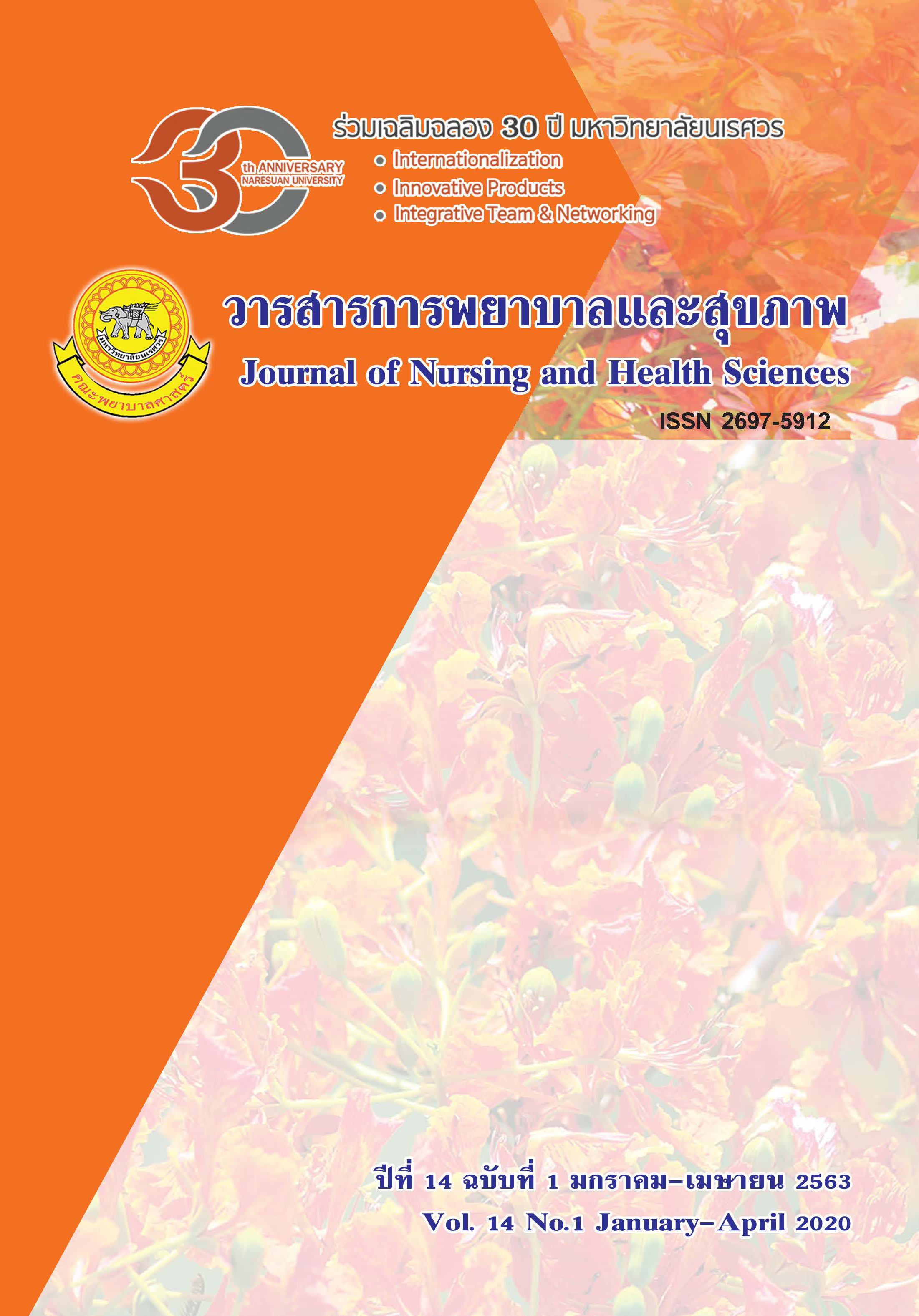Effects of Curriculum for Enhancing the Elderly Competencies in Health Promotion and Prevention of Complications fromNon-communicable Diseases on the Elderly's Functional Fitness and Quality of Lifeat Had Chao Samran Elderly School, Muang, Phetchaburi
Main Article Content
Abstract
This quasi-experimental research aimed to evaluate the effectiveness of the curriculum for enhancing the elderly competencies in health promotion and prevention of complications from chronic non-communicable diseaseson functional fitness and quality of life of the elderly at Had Chao Samran elderly school, Muang, Phetchaburi.Participants consisted of 40 older adults who were the 2nd group of elderly students and voluntary to participate in the curriculum activities for 90 hours. Data were collected at baseline and at the end of experiment using a Senior Fitness Test (SFT) battery, and a Thai version of the brief form of the World Health Organization Quality of Life (WHOQOL-BREF-THAI) instrument. The data were analyzed using descriptive statistics and paired samples t-test. Results revealedthat mean scores of the SFT assessments, including blood pressure, waist circumference, upper-and lower-body strength, upper- and lower-body flexibility, balance and agility, and aerobic endurance at the end of the experiment significantly improved compared to those at baseline (p < .05). In terms of quality of life, mean scores of the WHOQOL-BREF-THAI instrument at the end of the trial were significantly higher than those at baseline on overall score and all four components of quality of life (p < .05). The resultsindicated that older adults were able to make significant improvements in their functional fitness and quality of life by engaging in the elderly school. Therefore,this curriculumshould be implemented in other elderly schools and applied appropriately to its context.
Article Details
References
Banphuan, W. (2015). Guidelines for training on the care manager program (2nd ed.). Bangkok: Kaew Chao Jom Media and Publishing Center, Suan Sunandha Rajabhat University. [In Thai].
Mahatnirankun, S., Tantipiwatanasakul, W., & Poompaisanchai, W. (2002). Mental health screening: World Health Organization's quality of life indicators, Thai language brief form. Project for developing a program in mental health survey in 2002. Nonthaburi: Department of Mental Health. [In Thai].
Ministry of Social Development and Human Security. (2014). Thai elderly population: Current and future 2014. Bangkok: Information and Communication Technology Center. [In Thai].
Noradechanunt C., Prasomsuk S., Anunjew P., Sirited P., & Thongphetch, S. (2019). The curriculum development for strengthening the elderly’s competencies on health promotion and prevention of complications from non-communicated chronic diseases at Had Chao Samran Senior Health Centre, Muang, Phetchaburi. Phetchaburi: Faculty of Nursing Science, Phetchaburi Rajabhat University. [In Thai].
Noradechanunt, C., Worsley, A., & Groeller, H. (2017). Thai Yoga improves physical function and well-being in older adults: A randomised controlled trial. Journal of Science and Medicine in Sport, 20(5), 494–501.
Phetchaburi Provincial Health Office. (2017). Summary of the second round of regular inspections and inspections of fiscal 2016. Phetchaburi: Phetchaburi Provincial Health Office. [In Thai].
Pinthong, J. (2015). System reform for the elderly society. Bangkok: Odeon Store. [In Thai].
Prasartkul, P. (2016). Situation of the Thai elderly 2015. Bangkok: Amarin Printing & Publishing Public Co, Ltd. [In Thai].
Pruksasri, P, Kongin, W., & Jittanoon, P. (2008). The effects of social-dance exercise program on balance among the fall-risk elderly. Songklanagarind Medical Journal, 26(4), 323-337. [In Thai].
Rikli, R.E., & Jones, C.J. (1999). Development and validation of a functional fitness test for community-residing older adults. Journal of Aging and Physical Activity, 7(2), 129–161.
Seesensui, S., & Choosakul, C. (2017). Effect of 30 minutes exercise programs on health – related physical fitness and balance for female elderly. Journal of Humanities and Social Sciences, Mahasarakham University, 36(5), 45-53. [In Thai].
Sirited, P., & Thammaseeha, N. (2019). Self-efficacy theory and self-healthcare behavior of the elderly. Journal of The Royal Thai Army Nurses, 20(2), 58-65. [In Thai].
Sukwatjanee, A. (2012). Exercise for elders. Journal of Humanities and Social Sciences, Srinakharinwirot Research and Development, 4(8), 216-223. [In Thai].
Suphapu, N., & Juntarawijit, Y. (2017). Effects of self-regulation program with exercise on blood pressure in elderly with essential hypertension. Journal of Nursing and Health Sciences, 11(3), 70-80. [In Thai].
Supkaew, Y. (2016). The development of elderly’s quality of life by using the elderly school curriculum, the excellent center in health promotion of elderly, Boromarajonani College of Nursing Nakhon Si Thammarat. Journal of Nursing and Education, 9(2), 25-39. [In Thai].
Wongpanarak, N., & Chaleoykitti, S. (2014). Quality of life: A study of elderly in Thailand. Journal of The Royal Thai Army Nurses, 15(3), 64-70. [In Thai].
Yodphet, S., Phatanasri, P., & Sakdaporn, T. (2017). The research on “good lessons learned from schools and clubs for older persons with knowledge transfer activities. Bangkok: J. Print. [In Thai].


